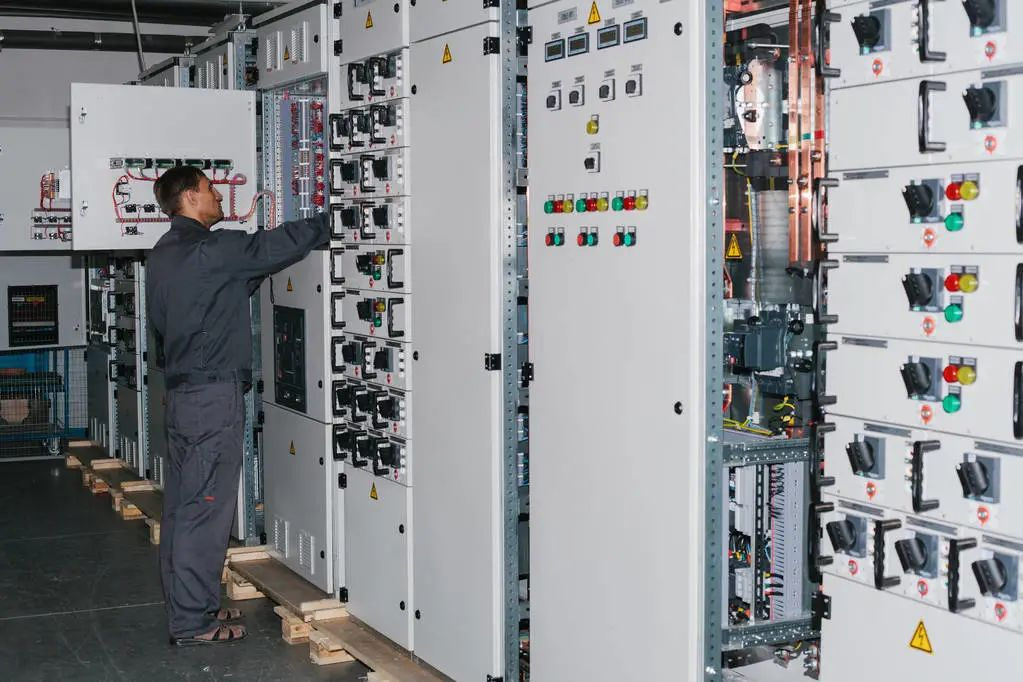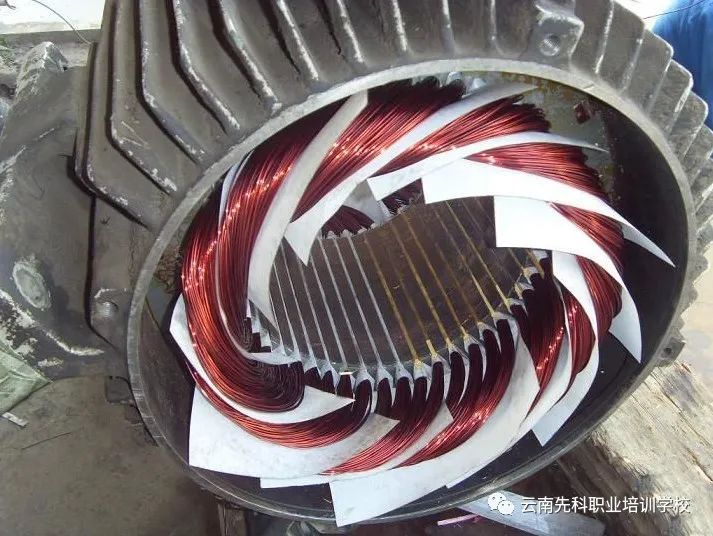Tips for preventing starting failures of three-phase asynchronous motors
The speed of the rotor of the three-phase asynchronous motor is lower than the speed of the rotating magnetic field. The rotor winding induces electromotive force and current due to the relative motion between the rotor winding and the magnetic field, and interacts with the magnetic field to generate electromagnetic torque to achieve energy conversion. Compared with single-phase asynchronous motors, three-phase asynchronous motors have good operating performance and can save various materials. According to the different rotor structures, three-phase asynchronous motors can be divided into cage type and winding type. The cage rotor asynchronous motor has a simple structure, reliable operation, light weight, and low price. It has been widely used. Its main disadvantage is that it is difficult to adjust the speed. The rotor of the winding three-phase asynchronous motor is also equipped with a three-phase winding like the stator and is connected to an external rheostat through slip rings and brushes. Adjusting the rheostat resistance can improve the starting performance of the motor and adjust the speed of the motor.
When a symmetrical three-phase alternating current is passed through the three-phase stator winding, a rotating magnetic field is generated that rotates clockwise along the inner circle space of the stator and rotor at a synchronous speed n1. Since the rotating magnetic field rotates at a speed of n1, the rotor conductor is stationary at the beginning, so the rotor conductor will cut the stator rotating magnetic field and generate an induced electromotive force (the direction of the induced electromotive force is determined by the right-hand rule). Since the two ends of the conductor are short-circuited by the short-circuit ring, under the action of the induced electromotive force, an induced current will be generated in the rotor conductor with a direction basically consistent with the induced electromotive force. The current-carrying conductor of the rotor is acted upon by an electromagnetic force in the stator magnetic field (the direction of the force is determined by the left-hand rule). The electromagnetic force generates an electromagnetic torque on the rotor shaft, driving the rotor to rotate along the direction of the rotating magnetic field.
Through the above analysis, we can conclude that the working principle of the motor is as follows: when the three-phase stator winding of the motor (each phase differs by 120 degrees electrical angle) is supplied with three-phase alternating current, a rotating magnetic field will be generated. This rotating magnetic field cuts the rotor winding, thereby generating an induced current in the rotor winding (the rotor winding is a closed path). The current-carrying rotor conductor will generate an electromagnetic force under the action of the stator rotating magnetic field, thereby forming an electromagnetic torque on the motor shaft, driving the motor to rotate, and the direction of motor rotation is the same as the direction of the rotating magnetic field.
1 Causes and countermeasures of partial burning of motor windings
(1) Due to poor sealing of the motor itself and leakage in the environment, water or other corrosive liquids or gases enter the motor, corroding the insulation of the motor winding. The most serious part or the weakest point of the insulation may cause a point-to-ground short circuit, phase-to-phase short circuit or turn-to-turn short circuit, resulting in partial burning of the motor winding.
> > > >
Corresponding countermeasures:
①Try to eliminate leakage of process and mechanical equipment;
② Pay attention to the sealing of every part of the motor during maintenance;
③ For motors operating in this environment, the minor and medium repair cycles should be shortened, and in serious cases, maintenance should be carried out in a timely manner.
(2) Due to bearing damage, shaft bending and other reasons, the friction between the stator and rotor (commonly known as bore scraping) causes the core temperature to rise sharply, burning the slot insulation and turn-to-turn insulation, causing the winding turn-to-turn short circuit or "blasting" to the ground. In severe cases, the stator core will be reversed, misaligned, the shaft will be worn, and the end cover will be scrapped.
> > > >
Bearing damage is generally caused by the following reasons:
①Improper bearing assembly.
② The bearing cavity is not cleaned or the grease added is not clean.
③ The bearings are replaced and reprocessed. After the motor end cover is nested, the interference is large or the ovality exceeds the standard, causing the bearing ball clearance to be too small or uneven, resulting in increased friction when the bearing is running, and the temperature rises sharply until it burns out.
④ Due to the axial misalignment of the stator and rotor cores or the insufficient precision after re-machining of the shaft, the inner and outer rings of the bearing are not on the same section plane, causing the bearing to heat up and burn out after "unusual force" during operation.
⑤ Due to the excessive temperature rise of the motor body and the failure to replenish grease the bearings in time, the bearings are short of oil or even burnt.
⑥ Bearing damage caused by mixing different types of grease.
⑦ The bearing itself has manufacturing quality problems, such as rust on the raceway, inflexible rotation, excessive clearance, deformed cage, etc.
⑧ The standby machine has not been running for a long time, the grease has deteriorated, the bearings have rusted but no maintenance has been carried out.
> > > >
Corresponding countermeasures:
① When disassembling and installing bearings, it is generally necessary to heat the bearings to 80℃~100℃, such as using bearing heaters, transformer oil boiling, etc. Only in this way can the assembly quality of the bearings be guaranteed.
② Before installing the bearing, it must be cleaned carefully. No impurities can be left in the bearing cavity, and it must be kept clean when adding grease.
③Try to avoid unnecessary shaft machining and motor end cover nesting.
④ When assembling the motor, make sure the stator and rotor cores are aligned and not misaligned.
⑤ The motor casing must be clean and show its original color, ventilation must be guaranteed, the cooling device must not have dirt, and the fan blades must be kept intact.
⑥ It is prohibited to mix multiple lubricants.
⑦ Before installing the bearing, conduct a comprehensive and careful integrity check on the bearing.
⑧For motors that have not been used for a long time, necessary disassembly inspection and bearing grease renewal must be carried out before use.
(3) Because the winding end is too long or partially damaged, it rubs against the end cover or other accessories, causing partial burning of the winding.
> > > >
Corresponding countermeasures:
When the motor winding is updated, the wire must be embedded according to the original data. When inspecting the motor, any rigid object must not touch the winding. When the motor rotor core is pulled out, the rotor must be lifted to prevent the stator and rotor cores from rubbing against each other. When using open flames, the winding must be isolated from the open flame and a certain distance must be maintained. Before reinstalling the motor, the integrity of the winding must be carefully checked and confirmed.
(4) Due to long-term overload or overheating operation, the aging of winding insulation is accelerated, and the carbonization of the weakest point of the insulation causes short circuits between turns, short circuits between phases, or short circuits to the ground, causing partial burning of the winding.
> > > >
Corresponding countermeasures:
①Try to avoid overloading the motor.
② Ensure that the motor is clean and well ventilated and heat-dissipating.
③ Avoid frequent starting of the motor and perform a dynamic balancing test on the motor rotor when necessary.
(5) The motor winding insulation is affected by mechanical vibration (such as large current shock during startup, vibration of the towed equipment, imbalance of the motor rotor, etc.), causing the winding to have undesirable phenomena such as loose turns and insulation cracks. The destructive effect continues to accumulate, and thermal expansion and contraction cause friction in the winding, thereby accelerating insulation aging, and ultimately leading to carbonization of the insulation damage until the winding is burned.
> > > >
Corresponding countermeasures:
① Avoid frequent starting as much as possible, especially for high-voltage motors.
② Ensure that the vibration values of the towed equipment and motor are within the specified range.

2 Causes of one or two phase winding burnout (or overheating) of three-phase asynchronous motor
If one or two phases of the motor windings are burned out (or overheated), it is usually due to phase loss. We will not make a deep theoretical analysis here, but only give a brief explanation.
When the motor loses a phase for any reason, the motor can still continue to run, but the speed drops and the slip becomes larger. Phases B and C become connected in series and in parallel with phase A. Under the condition of unchanged load, the current of phase A is too large. After running for a long time, the winding of this phase will inevitably overheat and burn out.
This is the case where the three-phase asynchronous motor winding is Y-connected: after the power supply loses a phase, the motor can continue to run, but the speed drops significantly, the slip becomes larger, and the rate at which the magnetic field cuts the conductor increases. At this time, the B phase winding is open, and the A and C phase windings become connected in series and the current passing through is too large. Long-term operation will cause the two-phase windings to burn out at the same time.
It should be pointed out here that if a stopped motor is missing one phase of power and the switch is turned on, generally only a buzzing sound will occur but the motor cannot start. This is because the symmetrical three-phase AC current passing through the motor will generate a circular rotating magnetic field in the stator core, but when one phase of power is missing, a single-phase pulsating magnetic field is generated in the stator core, which cannot generate starting torque for the motor. Therefore, the motor cannot start when the power supply is missing a phase. However, during operation, an elliptical rotating magnetic field with a high three-phase harmonic component is generated in the air gap of the motor. Therefore, the running motor can still operate after the phase is missing, but the magnetic field is distorted, and the harmful current component increases sharply, eventually causing the winding to burn out.

Whether the motor is static or dynamic, the direct harm caused by phase loss operation is that one or two phases of the motor winding will overheat or even burn out. At the same time, the overcurrent operation of the power cable accelerates the aging of the insulation. Especially in static state, phase loss will generate a stall current several times the rated current in the motor winding. The speed of its winding burning out is faster and more serious than the sudden phase loss during operation. Therefore, while we perform daily maintenance and overhaul on the motor, we must also conduct comprehensive overhaul and testing on the corresponding MCC functional units of the motor. In particular, we must carefully check the reliability of the load switch, power circuit, and static and dynamic contacts. Eliminate phase loss operation.



























 XINDA
XINDA